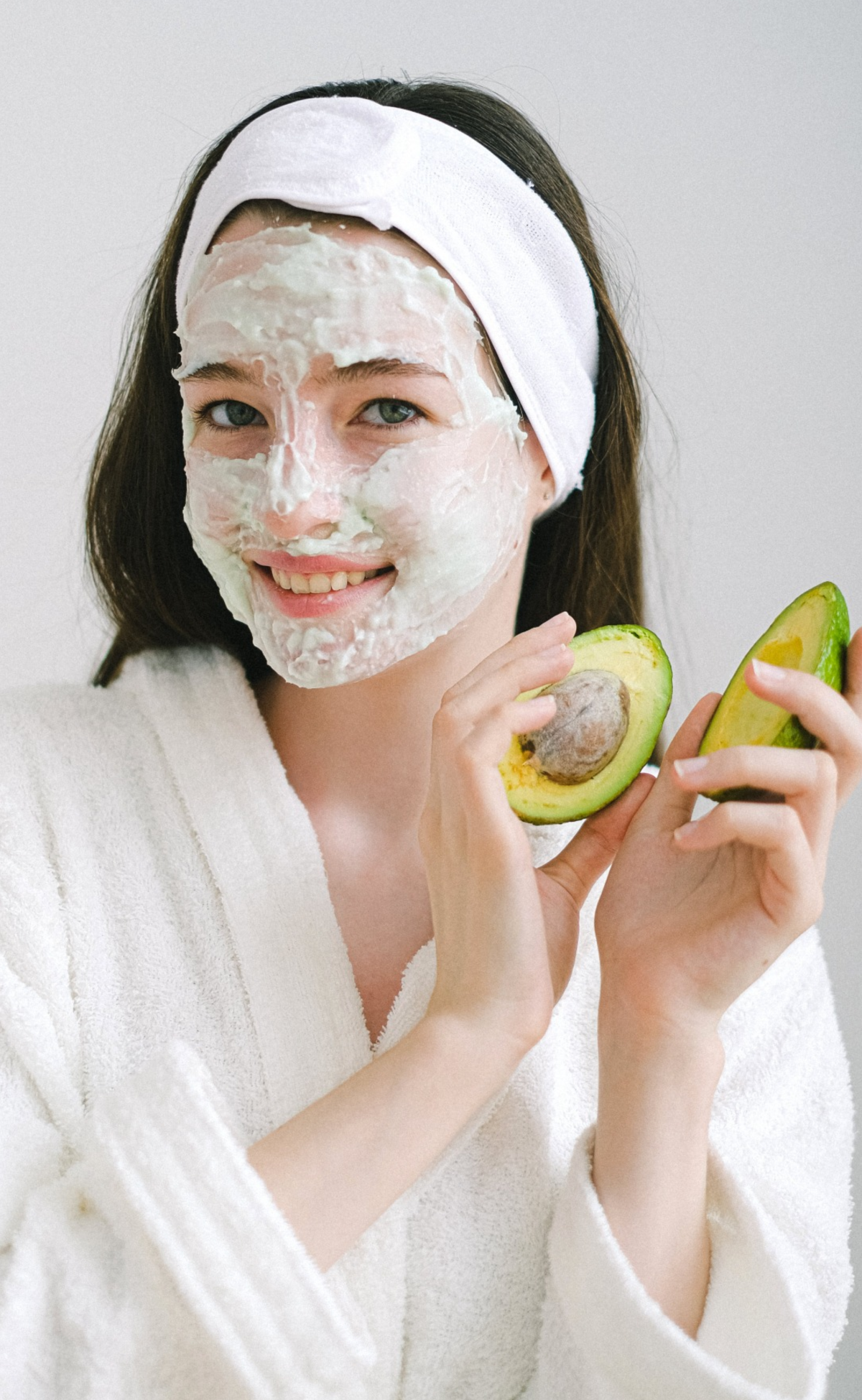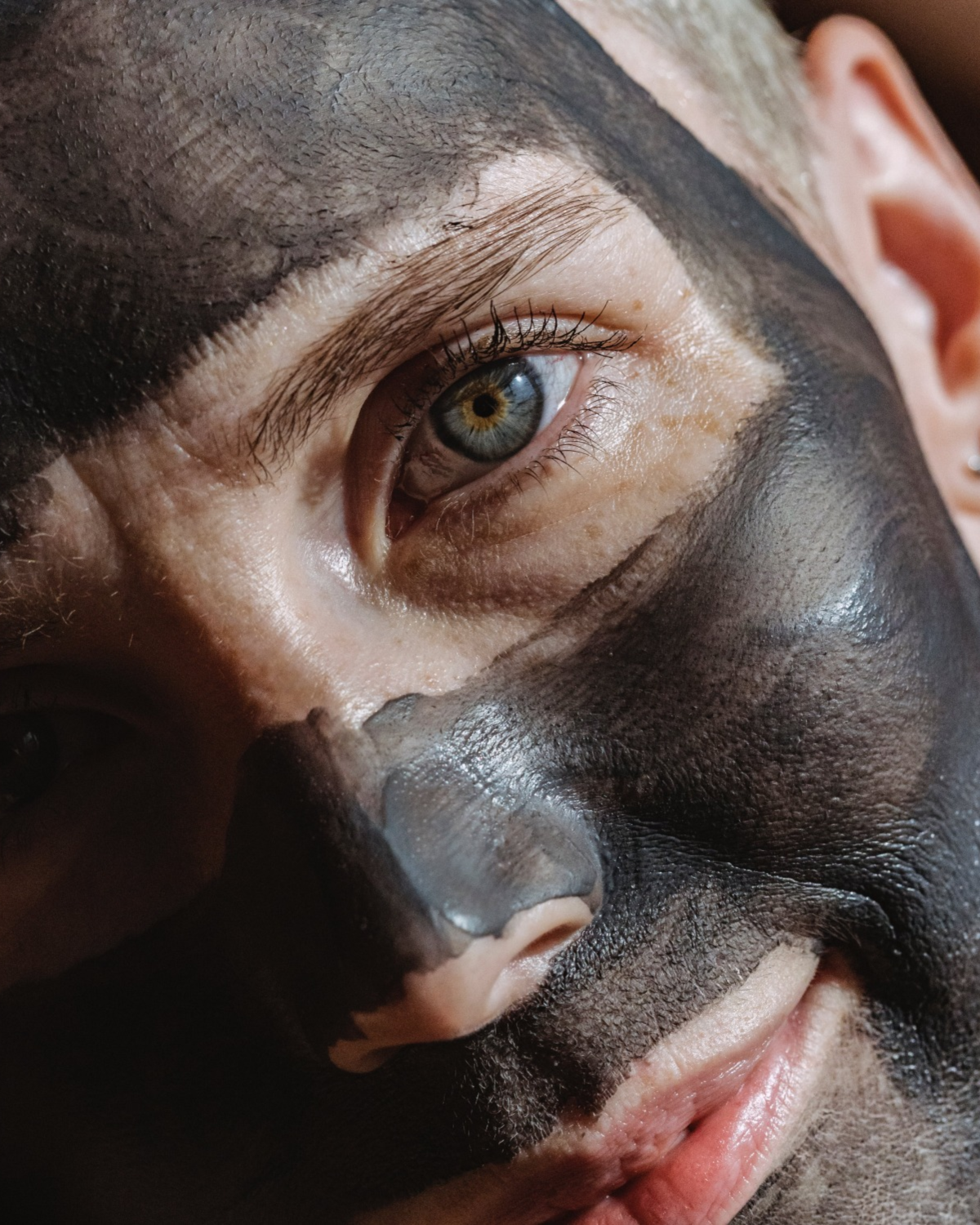Whitening
Skin Makeup
Inhibition of melanin production

Acerola cherry extract Vitamin C 5%-30%
Acerola cherry extract contains a large amount of vitamin C, which can whiten the skin and increase resistance. Vitamin C can also significantly inhibit the production of melanin, achieving the effect of lightening and removing freckles.

Phyllanthus emblica extract Total gallic acid 10%-50%
In order to study its immunomodulatory function, we used RAW264.7 cells treated with lipopolysaccharide (LPS) to induce cell inflammation. It was found that Phyllanthus emblica extract could provide anti-inflammatory ability. The level of reactive oxygen species in cells was measured by flow cytometry, and it was found that the extract powder could reduce reactive oxygen species in a dose-dependent manner. In addition, we found that Phyllanthus emblica has the ability to resist melanin production. We chose the appropriate concentration of 0.001~1.000mg/mL fruit extract powder to treat B16F10 cells, and there was no significant cytotoxicity. As long as the powder concentration of Phyllanthus emblica fruit extract is as high as 1mg/mL, it can inhibit melanin and mushroom tyrosinase.

Turmeric extract Curcumin 20%-95%
Many people want to have fair and translucent skin. The curcumin in turmeric extract can effectively inhibit the synthesis of melanin, reduce the production of melanin precipitation, and can be used for whitening. Turmeric extract can also promote the skin's self-repair ability, speed up cell metabolism, and make skin tone more even.

Olive fruit extract Hydroxytyrosol 5%-20%
In addition to various phenols, olive fruit extract also contains vitamin C and hydroxytyrosol, which eliminates free radicals, is antioxidant, and has a certain effect in delaying aging. At the same time, tests have shown that olive fruit extract can promote hair growth and can be used as a hair growth agent. It also has a good moisturizing effect and maintains skin moisture. Olive fruit extract has a strong activating effect on macrophage activity. One of the functions of macrophages in the cortex is to engulf melanin, so olive fruit extract has a whitening effect on the skin.

NMN(β-nicotinamide mononucleotide) 99%
By downregulating receptors on melanin production-related pathways and reducing melanin formation, NMN can improve pigmentation. NMN is quickly converted into NAD+ after being absorbed by the body, and NAD+ can also inhibit melanin production in old melanocytes.
UV Defense

Haematococcus pluvialis extract Astaxanthin 0.5%-2.5%
Haematococcus pluvialis extract contains a large amount of astaxanthin, which has antioxidant effects. It can delay the rate of aging, activate cells, remove free radicals, provide sufficient nutrition to the skin, prevent skin aging, make the skin more delicate, resist ultraviolet rays and radiation, and reject the production of melanin.

Red orange extract Anthocyanins 2%-5%
Studies have shown that red orange extract can effectively improve skin response to ultraviolet radiation; increase skin antioxidant capacity and reduce lipid peroxidation caused by ultraviolet radiation; increase skin moisturizing, elasticity and luster; reduce the intensity of melanin staining and the depth of wrinkles in black spots.

Apple extract Procyanidins 5%-20%
The apple polyphenols in apple extract provide strong protection to the body from the cellular level to fight against free radicals and the cell damage they cause, including tumor formation and growth, as well as pigmentation and skin oxidation caused by UV radiation.

Olive fruit extract Hydroxytyrosol 5%-20%
HT lowered senescence-associated β- galactosidase activity in a dose-dependent fashion in UVA exposed human dermal fibroblasts (HDFs).106 HT also reduced the elevated expression of MMP-1 and MMP-3 provoked by UVA.HT significantly reduced DNA strand breaks caused by UVB, in addition to intracellular ROS formation and 8-OHdG levels. In addition to tyrosol, Salucci et al. showed in another study that HT (20 μM) reduced UVB-induced keratinocyte apoptosis by half and showed phenolic compounds (in concentrations from 50 to 400 μM) to be effective in preventing DNA and protein damage.

Coconut oil Microcapsule powder
The naturally produced oil and medium-chain triglycerides in sebum are similar to those in coconut oil microcapsule powder. There are lipophilic bacteria on the surface of the skin that are beneficial to our bodies. These lipophilic bacteria use part of the glycerol (colorless, transparent, sweet, viscous liquid alcohol organic alcohol) from the fat on the skin to produce fatty acids. In this process, lipophilic bacteria convert the medium-chain triglycerides in sebum into antibacterial and sterilized medium-chain fatty acids, and our whole body is protected by a thin layer of medium-chain fatty acids produced by this lipophilic bacteria, to protect us from ultraviolet rays.
Antioxidation

Red grape seed extract Total polyphenols 20%-60%
The proanthocyanidins in red grape seed extract have high antioxidant capacity, and its antioxidant capacity is 20 times that of vitamin E and vitamin C. It can prevent the damage of oxidative free radicals to the skin, stimulate the activity of the antioxidant system in the body, and remove free radicals in the body.

Acerola cherry extract Vitamin C 5%-30%
The vitamin C in acerola extract is a good antioxidant that can scavenge free radicals produced during human activities. It also contains a variety of nutrients, is absorbed slowly in the human body, and its concentration in the serum can remain at a high level for a long time. Its effect on the human body is unmatched by other sources of vitamin C. Its unique anti-aging factor (SOD) - superoxide dismutase, can effectively resist the invasion of foreign harmful substances and has the effect of delaying aging.

Phyllanthus emblica extract Total gallic acid 10%-50%
Phyllanthus emblica extract is rich in tannins, vitamin C and related polyphenolic compounds, all of which have good antioxidant activity.

Olive fruit extract Hydroxytyrosol 5%-20%
Studies have shown that hydroxytyrosol in olive fruit extract has a strong antioxidant effect. Hydroxytyrosol, as a hydrogen donor, has a scavenging effect on a variety of reactive oxygen species, and can reduce singlet oxygen to triplet oxygen with low activity. It is also an effective scavenger for all kinds of free radicals, producing polyphenol free radicals with low activity and interrupting the chain reaction of free radical oxidation.

Gooseberry fruit extract Vitamin C 5-50%
The antioxidant effect of vitamin C includes the activation of intracellular antioxidant systems,Ascorbic acid interacts with small molecule antioxidants, including tocopherol, glutathione-1, and thioredoxin, and can also stimulate the biosynthesis and activation of antioxidant enzymes, such as superoxide dismutase, catalase, or glutathione. Thione peroxidase. In addition, ascorbic acid can promote a variety of transcription factors (Nrf2, Ref-1, AP-1), which can express genes encoding antioxidant proteins. Additionally, it supports the effects of other exogenous antioxidants, primarily polyphenols. In this regard, DNA, proteins and lipids are protected from oxidation.
Moisturizing

Haematococcus pluvialis extract Astaxanthin 0.5%-2.5%
The astaxanthin in haematococcus pluvialis extract has moisturizing and moisturizing effects on the skin, which can increase the moisture content of the skin and improve the smoothness and softness of the skin.

Olive leaf extract Oleanolic acid 10%-50%
The natural plant ingredients in olive leaf extract have strong moisturizing ability, and can effectively lock in moisture and keep skin moist for a long time. Whether in a dry winter or in an air-conditioned room, it can effectively improve the dryness of the skin and make the skin more tender and delicate.

Hydrolyzed elastin 80%
Because the molecular weight of hydrolyzed elastin is relatively small, it helps skin absorption and can play a moisturizing and hydrating role.

Dimethyl sulfone(MSM) 99%
It quickly penetrates the skin and absorbs moisture, providing moisture to dry skin. Therefore, it is often used in cosmetics and skin care products as a humectant and emollient. In addition, it can also reduce the moisture loss of the skin and keep the skin moist. It also has certain antioxidant properties, which can inhibit the production of free radicals and delay skin aging.

Soybean extract Isoflavones 30%-80%
The soy isoflavones contained in soybean extract can replenish new cells and protected epidermal cells with moisture, thereby moisturizing the skin.
Promotion of DNA repair

Cowberry extract Resveratrol 1%-10%
Resveratrol in cowberry extract is a highly biologically active non-flavonoid polyphenol compound containing a stilbene structure. It has significant antioxidant and anti-free radical effects, as well as preventing and treating aging-related oxidation. Resveratrol's inhibition of cellular aging is primarily mediated by delaying age-related telomere attrition, maintaining genome integrity and promoting DNA damage repair, thereby improving skin

Cockscomb extract Hyaluronic acid 3%-10%
Hyaluronic acid is a recognized natural moisturizing factor with strong hygroscopic and film-forming properties. Sodium hyaluronate is a highly hygroscopic macromolecule that can provide water for the skin surface, promote the absorption of other active ingredients, provide a good environment for the synthesis of dermal collagen and elastic fibers, and reduce the marks of aging wrinkles.
Detoxification

NMN 99%
NMN can promote the metabolism of pigmentation and improve skin pigmentation by activating cell energy and scavenging free radicals.

Soybean extract Isoflavones 30%-80%
Soybean isoflavone in soybean extract can make up for the lack of endogenous estrogen secretion, has the effects of anti-oxidation, blocking melanin, inhibiting sebaceous gland secretion and so on, and can help the skin become whiter and smoother.
Inhibition of skin inflammation

Blackcurrant extract Anthocyanins 5%-35%
The large amount of anthocyanins contained in blackcurrant extract has strong anti-inflammatory effects, can inhibit inflammatory reactions, and can help improve skin itching, redness and swelling caused by skin inflammation.

Haematococcus pluvialis extract Astaxanthin 0.5%-2.5%
The astaxanthin contained in Haematococcus pluvialis extract has anti-inflammatory and soothing effects on the skin. It can reduce skin sensitivity, redness and inflammation. It is more suitable for skin inflammation after sun exposure and can repair damaged skin.

Flaxseed oil α-Linolenic acid 45%-60%
The alpha-linolenic acid (ω-3) contained in flaxseed oil will evolve into EPA (eicosapentaenoic acid) when ingested into the human body. EPA will combine with certain enzymes in the human body to synthesize leukotriene B5 and prostaglandin E3 that can prevent inflammation.

Olive leaf extract Hydroxytyrosol 5%-20 %
Olive leaf extract can stimulate the activity of macrophages, on the one hand, promote inflammatory reaction, kill bacteria and phagocytosis, inhibit the release of histamine, reduce the mRNA expression of inflammatory factors TNF- α and IL-1 β, and have anti-inflammatory effect, on the other hand, inhibit inflammatory response, promote cell proliferation, collagen deposition, improve red blood filament, stimulate peeling, inflammatory acne and post-inflammatory pigmentation in the later stage of inflammation.

Dimethyl sulfone(MSM) 99%
Dimethyl sulfone can inhibit the production of inflammatory mediators, such as cytokines, interleukins, etc., thereby exerting anti-inflammatory effects.
Wrinkle removal

Glycine 98%
Glycine is an essential component of the human body, which can provide skin immune function, regulate skin moisture and pH, help balance skin oil, improve the anti-allergy ability of sensitive skin, and prevent wrinkles. make the skin more smooth and elastic.

Soybean extract Isoflavones 30%-80%
The large amount of soy isoflavones contained in soy extract can promote collagen synthesis, reduce wrinkles, improve skin moisture content and elasticity by regulating estrogen in both directions, thereby fighting skin aging.

Krill oil Total phospholipids 30%-50%
The powerful antioxidant astaxanthin found in krill oil can reduce the effects of aging on the skin. Astaxanthin helps reduce free radical damage, which when present in excess, can break down body tissue. Free radicals can cause collagen and elastin fibers to break down, leading to a lack of elasticity and the formation of wrinkles.

Shark liver oil DPA 3.5%
Research shows that aging, sagging, wrinkles, and spots on human skin are related to the accumulation of free radicals in the body, weakened immunity, and endocrine disorders. As an intracellular free radical scavenger, shark liver oil is highly effective in preventing brown spots caused by an increase in free radicals.

NMN 99%
NMN occurs naturally in living cells, it is an inherent substance in the human body and is a precursor to the coenzyme NAD+. As we age, lower levels of NAD+ lead to a decrease in DNA repair capacity and an accumulation of DNA damage, driving the aging process. NMN anti-aging is realized by supplementing NAD+. NMN, as a precursor substance for the generation of NDA+, can activate the enzyme of NDA+ to repair cellular mitochondria after taking it, thus helping the human body to generate NAD+ and realize anti-aging.

Dimethyl sulfone(MSM) 99%
MSM is necessary for collagen production. Sagging skin and wrinkles, as well as dry, cracked skin, all form due to the loss of collagen. MSM works with vitamin C to build new healthy tissue. MSM normalizes collagen formation and radically improves skin health.
Anti glycosylation

Broccoli seed extract Sulforaphane glucosinolate 1%-13%
The sulforaphane glucosinolates in broccoli seed extract are considered to be powerful antioxidants that can neutralize free radicals in the body and reduce oxidative stress. By inhibiting oxidative stress, it helps slow down the glycation of proteins and the formation of AGEs. It also exerts anti-inflammatory effects by regulating inflammatory pathways, such as the NF-κB pathway, which helps reduce chronic inflammation and reduce the progression of glycation reactions.

Onion skin extract Quercetin 5%-10%
Methylglyoxal (MGO), a precursor of advanced glycation end products (AGEs), has been linked to AGEsassociated diseases.Quercetin reduced plasma and tissue MGO concentrations and inhibited AGE formation by trapping MGO and regulating the MGO detoxification systems in MGO-administered healthy mice

Pomegranate fruit extract Total polyphenols 10%-40%
Platelet aggregation and advanced glycation end products (AGEs) and oxidative stress are known as key factors for the development of cardiovascular diseases and diabetic complications.Pomegranate fruit can moderately inhibit the production of pentoside-like AGEs. The extracts all selectively inhibit platelet aggregation caused by inducers in a dose-dependent manner and exhibit antiplatelet effects.

Red grape seed extract Total polyphenols 20%-60%
Studies showed that anti-oxidants, such as some polyphenols whose antioxidant properties may depend on structure,
cell conditioning with oxidative stress, dose and exposure time,
might decrease oxidative stress in adipocytes and improve insulin
sensitivity . Polyphenols, flavonoids, curcuminoids and representatives of main dietary phenolic acids can have protective effect on healthy blood sugar.

Olive leaf extract Hydroxytyrosol 5%-20%
Hydroxytyrosol selectively inhibits protein glycation reaction in human insulin, and it is able to counteract the AGE-induced cytotoxicity in human neurotypical cells by acting on SIRT1 level and oxidative stress, as well as on inflammatory response. This study identifies new beneficial properties for HT and suggests it might be a promising molecule in protecting against the AGE-induced toxicity.
Improvement of intestinal environment

Soybean extract Isoflavones 30%-80%
The key benefits of soy isoflavones on intestinal function: (1) improvements in secretory capacity, (2) enhance
ments in intestinal epithelial barrier integrity via upregulation
of tight junction proteins, (3) tempering of intestinal immune
or inflammatory responses, and (4) attenuation of histomorphological damage.











